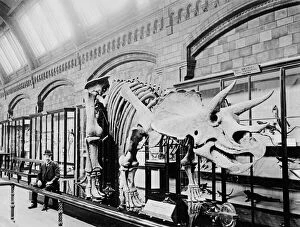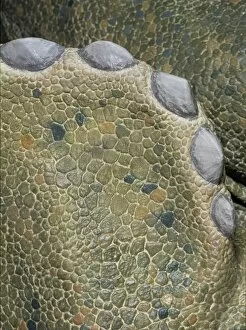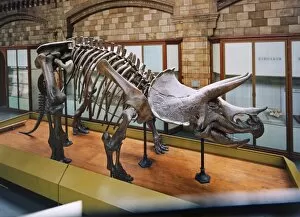Ceratopidae Collection
"Ceratopidae: Unveiling the Majestic Triceratops Legacy" Step back in time and witness the awe-inspiring world of Ceratopidae
All Professionally Made to Order for Quick Shipping
"Ceratopidae: Unveiling the Majestic Triceratops Legacy" Step back in time and witness the awe-inspiring world of Ceratopidae, a fascinating family that includes the iconic Triceratops. This captivating creature roamed the Earth millions of years ago, leaving behind an indelible mark on paleontological history. Behold the magnificent Triceratop dinosaur skeleton C016/5928, meticulously reconstructed to showcase its sheer size and strength. With its three distinctive horns and bony frill adorning its skull, this herbivorous giant commanded respect in prehistoric landscapes. Delicate details etched into Triceratops skin reveal intricate patterns that once adorned this ancient beast's body. These unique markings not only served as camouflage but also acted as a testament to their individuality within their herds. The mighty Triceratops stood tall among other dinosaurs, with its robust frame and powerful limbs enabling it to navigate various terrains effortlessly. Its skeletal remains offer a glimpse into its anatomy - from sturdy legs designed for stability to a massive ribcage protecting vital organs. Traversing through time, Ceratopidae showcases how these remarkable creatures thrived during the Late Cretaceous period. Their existence serves as a reminder of nature's incredible diversity and adaptability throughout Earth's history. Immerse yourself in the wonder – where ancient worlds collide with modern curiosity. Explore our exhibits featuring stunning fossils, interactive displays, and educational resources that shed light on these extraordinary beings who once ruled our planet with grace and might. Experience firsthand why Triceratops continues to captivate imaginations worldwide. Join us on this journey through time as we unravel the mysteries surrounding Ceratopidae – an enchanting chapter in Earth's evolutionary tale.















